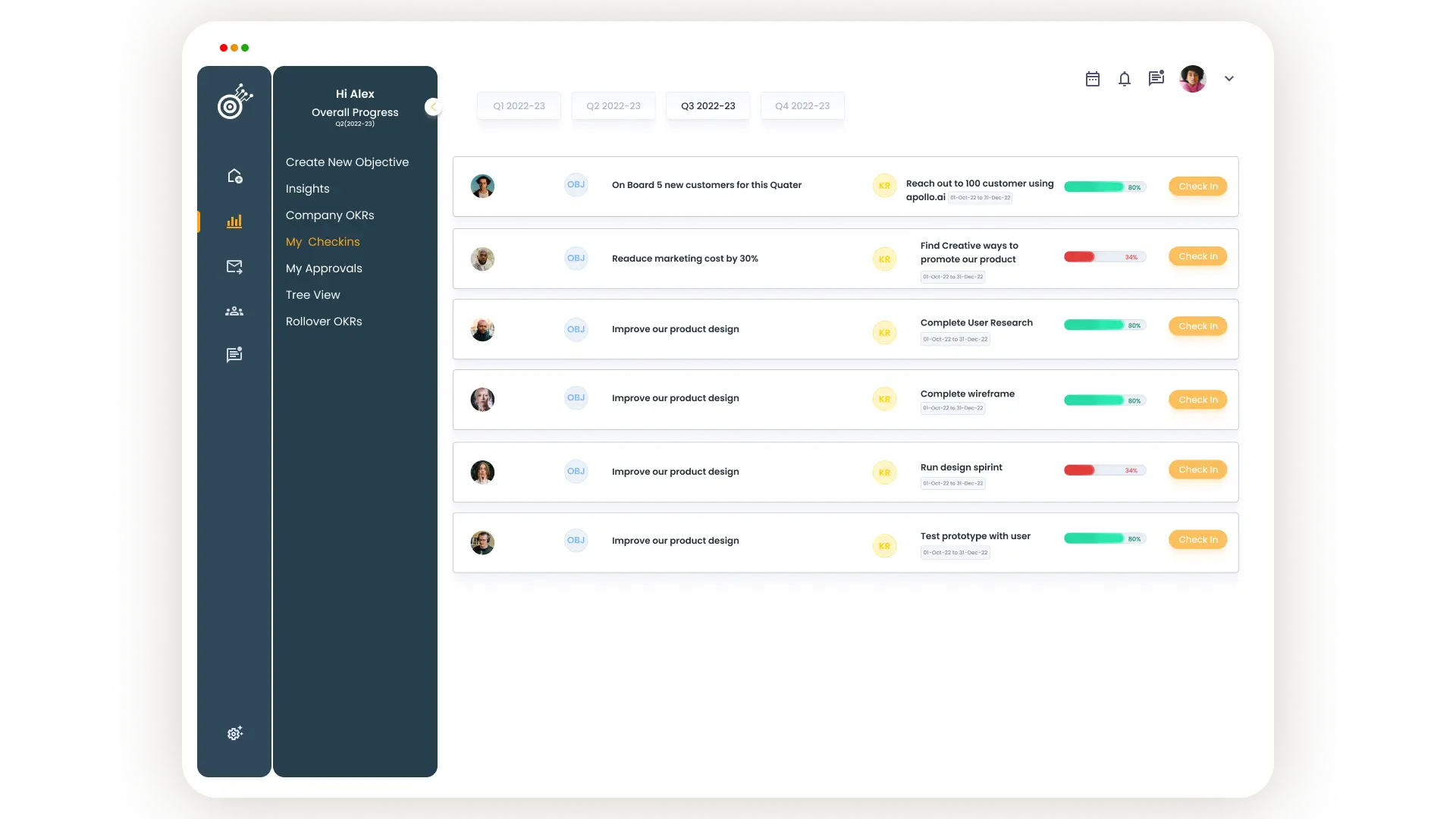The world of startups is a thrilling roller-coaster ride filled with innovation, passion, and ambition. However, the journey is also accompanied by a great number of challenges – from limited resources and fierce competition to rapidly changing markets. In this dynamic landscape, startups often find themselves searching for effective strategies to navigate these obstacles and achieve their growth objectives. This is where OKR strategies for startups step in as a powerful solution.
OKRs, or Objectives and Key Results, are a powerful goal-setting framework that has gained widespread popularity for its ability to provide clarity, focus, and alignment in achieving business goals. Whether you’re a budding entrepreneur or an established startup founder, implementing OKRs can help drive your business toward growth and innovation. In this blog post, we’ll look at 20 of the most effective startup OKR examples.
Before diving into the examples, let’s briefly review how startups benefit from OKRs and how to implement OKRs for startups effectively.
How To Write OKRs For Startups
1. Establishing a Clear Focus
When creating OKRs for your startup, it’s crucial to define clear and focused objectives. Start by identifying the most critical areas that align with your business strategy and goals. Avoid spreading your resources and efforts thin across multiple objectives. This involves focusing on pinpointing a targeted area of concentration.
There are five stages that divide your customer’s journey.
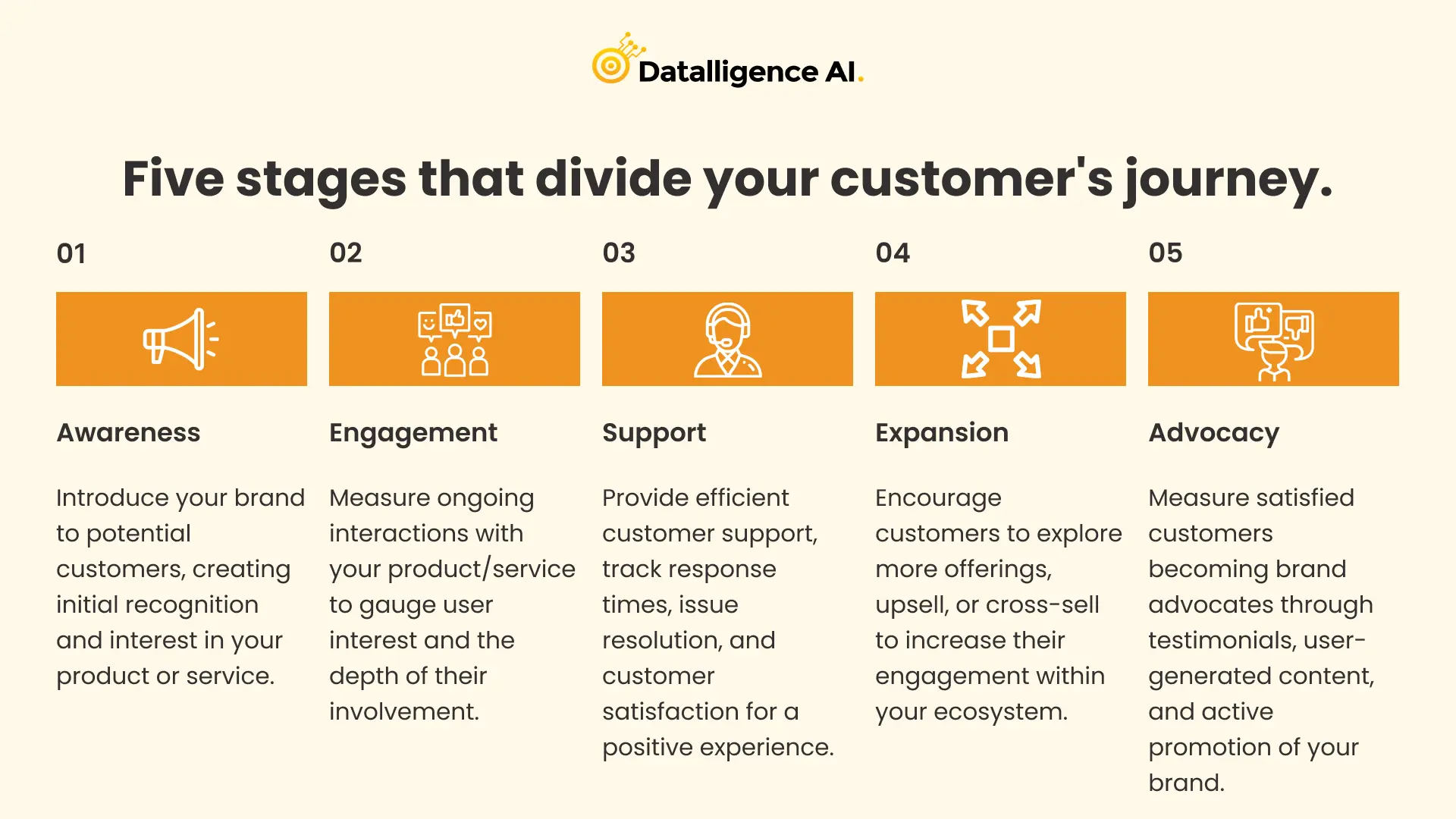
Creating OKRs focused on these areas can help you save a lot of time.
2. Understand Your Metrics
To effectively measure progress toward your objectives, you must establish relevant and quantifiable Key Results.
These should be specific metrics that can be tracked objectively. Instead of vague notions like “increase revenue,” consider using metrics like “achieve a 20% growth in monthly recurring revenue” or “acquire 1,000 new active users.”
These metrics should be ambitious yet realistic, challenging your team while remaining attainable.
3. OKR Action Planning
Creating a detailed plan is essential for achieving your objectives. It outlines the specific strategies and tactics you’ll use to reach your key results. Include actionable steps, responsibilities, and timelines. This is where you break down the “how” behind your objectives.
Example Plan:
- A. Customer Acquisition Strategy:
- Launch targeted social media ad campaigns to reach potential users.
- Implement a referral program to incentivize existing users to invite new users.
- Collaborate with industry influencers to promote our brand.
- B. Website Traffic Growth Tactics:
- Optimize website content for relevant keywords to improve organic search ranking.
- Publish weekly blog posts on industry trends and solutions.
- Share engaging content on social media platforms to drive traffic.
4. Align with Company Strategy and Values:
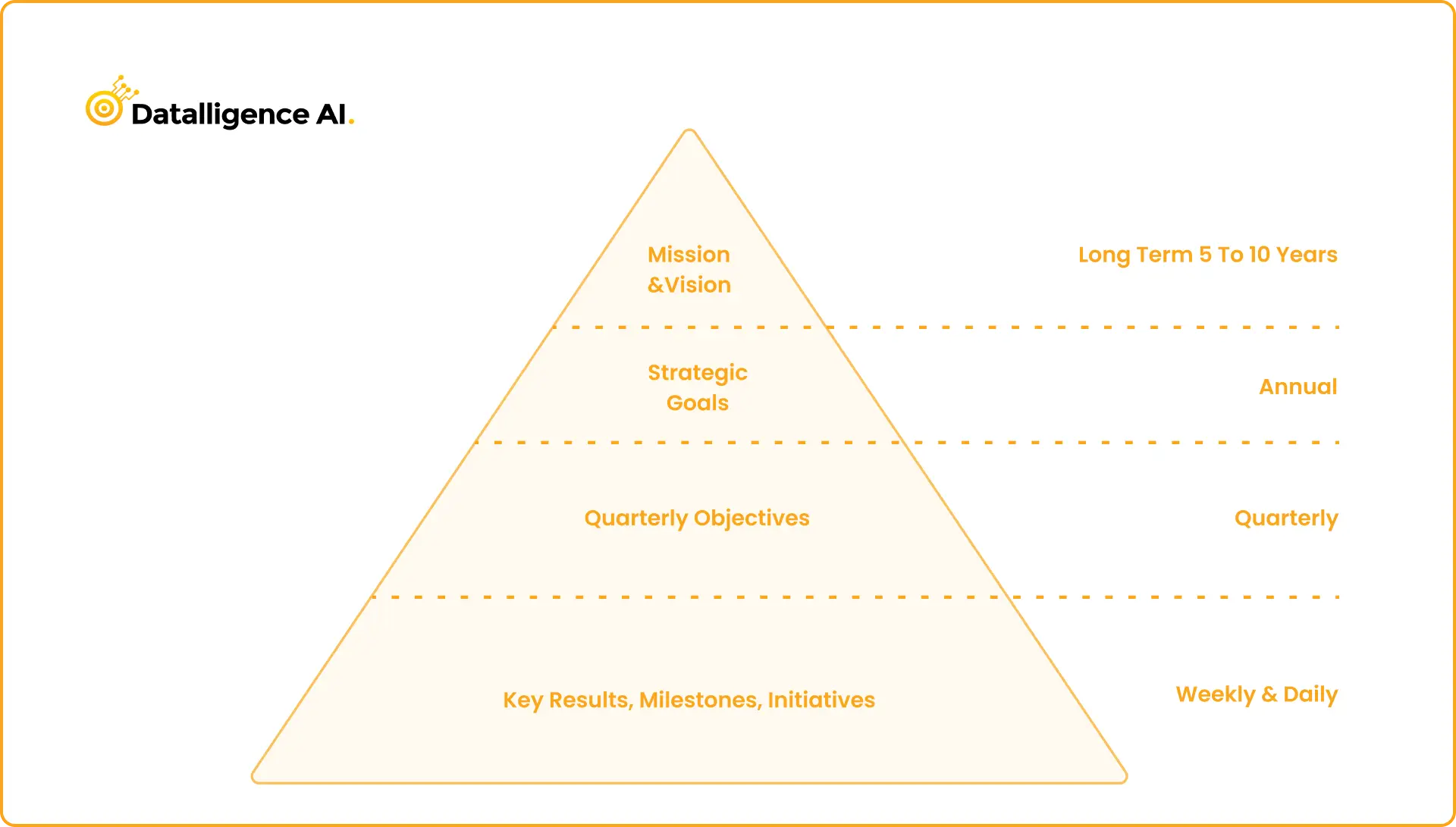
Your OKRs should align closely with your startup’s overall strategy and core values. This ensures that your efforts are directed toward outcomes that truly matter to your business’s growth.
Take the time to review your company’s mission, vision, and long-term goals. Aligning your OKRs with these guiding principles fosters a sense of purpose among your team and helps in maintaining a cohesive organizational focus.
5. Regularly Monitor and Adjust:
Writing OKRs is not a one-time task; it’s an ongoing process. Schedule regular check-ins to track progress and assess whether your startup is moving in the right direction. Use these opportunities to discuss challenges, adjust priorities if necessary, and celebrate wins.
If you find that certain Key Results are not being achieved or that circumstances have changed, don’t hesitate to modify or replace them.
20 Best Startup OKR Examples
- Objective: Establish Brand Awareness
Building brand awareness is vital for our startup’s growth. It will help us become recognized and trusted within our target market.
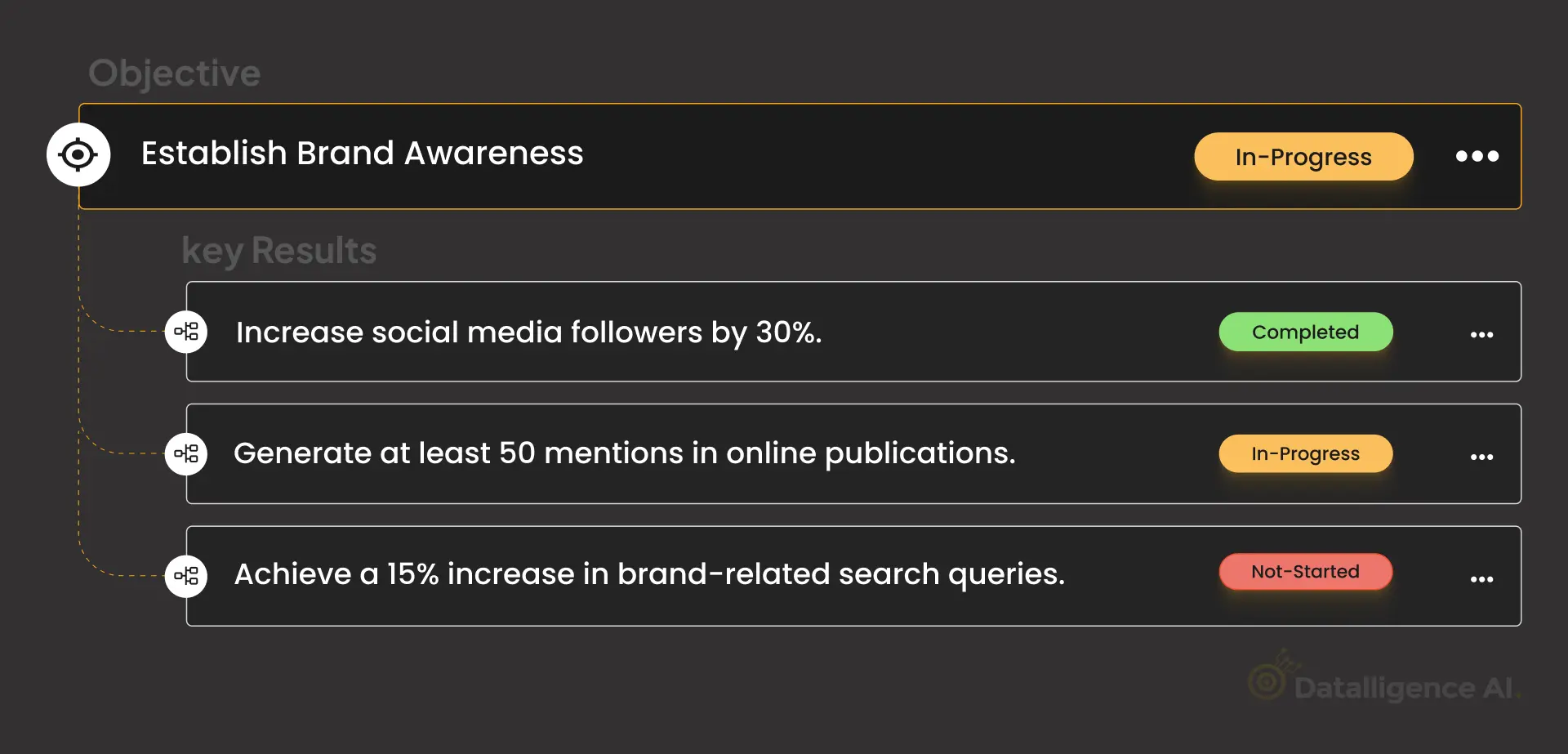
- Objective: Enhance Customer Support
Exceptional customer support is integral to our startup’s success. It fosters loyalty and positive word-of-mouth referrals.

- Objective: Develop Strategic Partnerships
Collaborating with strategic partners can help us access new markets and resources, accelerating our startup’s growth trajectory.
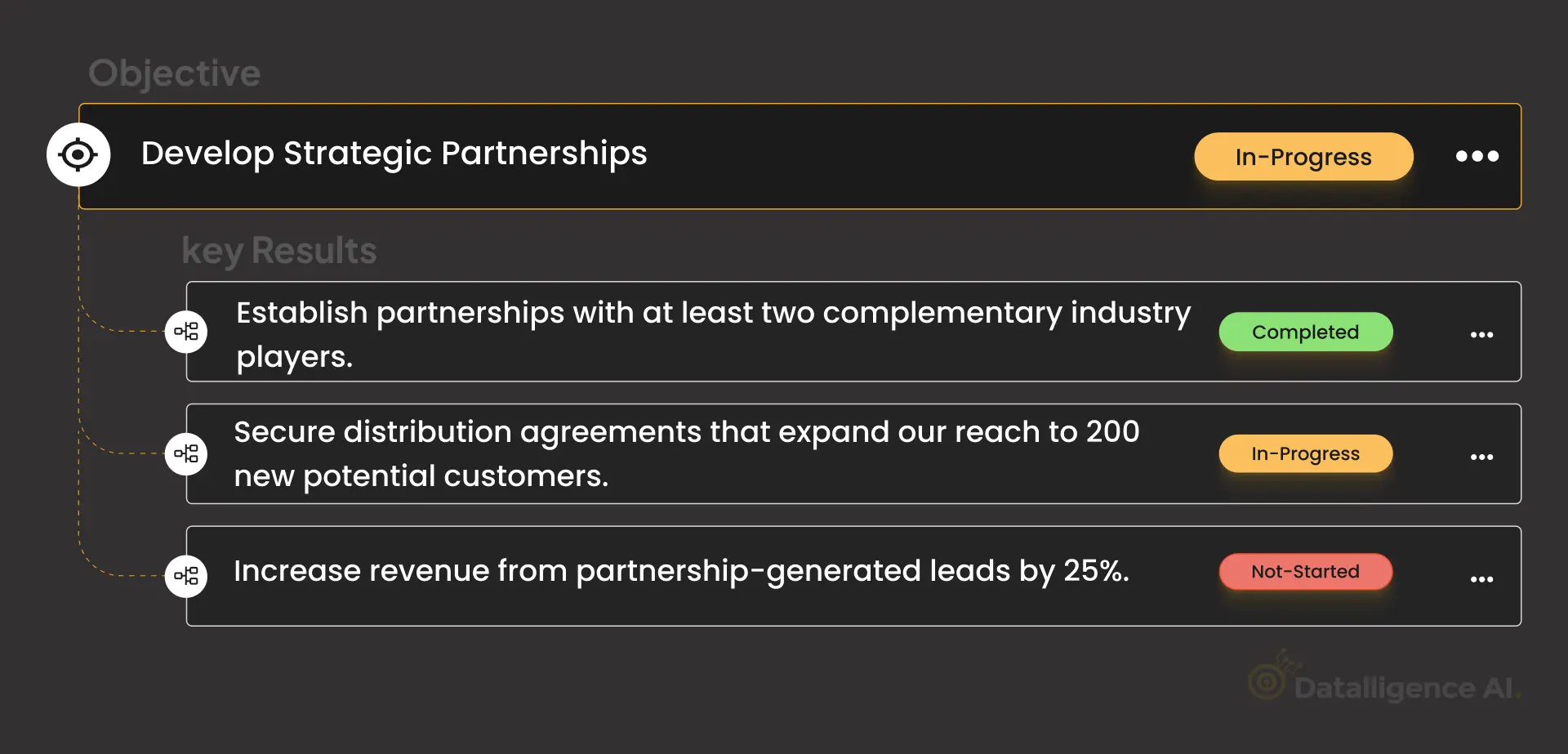
- Objective: Achieve Product-Market Fit (PMF)
Attaining PMF is the cornerstone of our startup’s success. It means aligning our product with customer needs to drive sustainable growth.
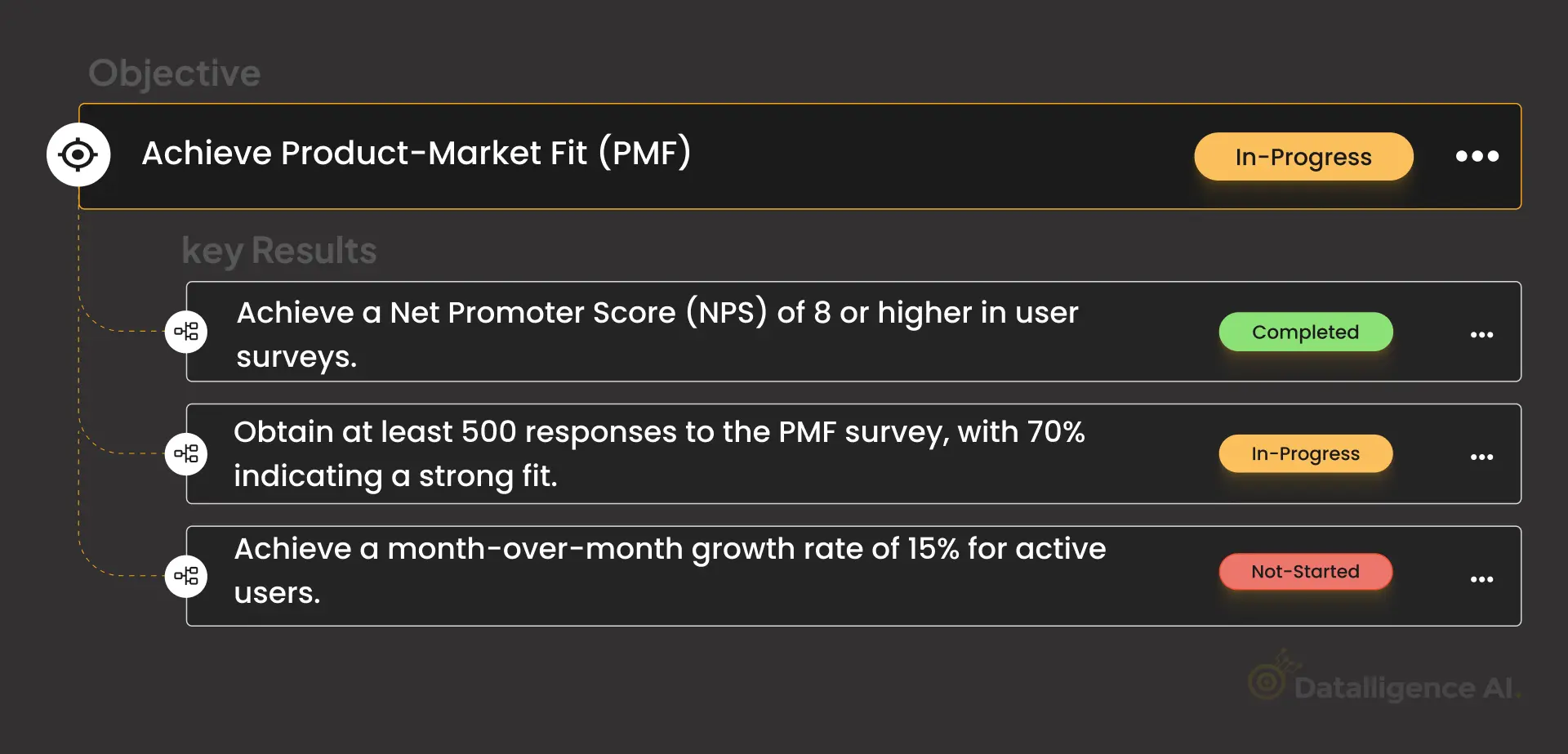
- Objective: Optimize User Onboarding
Smooth onboarding enhances user experiences, leading to better retention rates and higher product adoption.

- Objective: Scale User Acquisition
Expanding our user base is essential for achieving rapid growth and establishing our market presence.
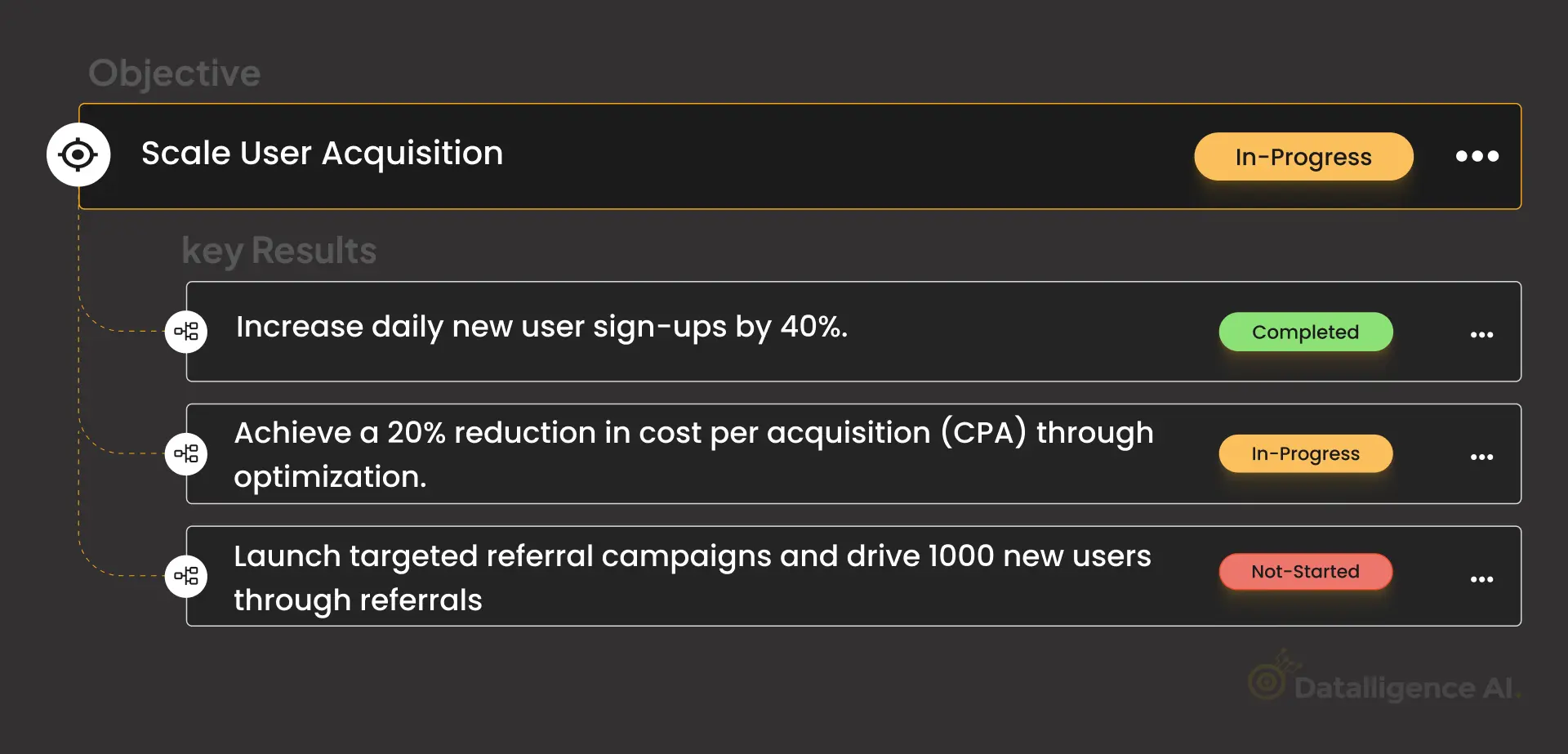
- Objective: Enhance Product Usability
An intuitive and user-friendly product encourages prolonged engagement and reduces churn.
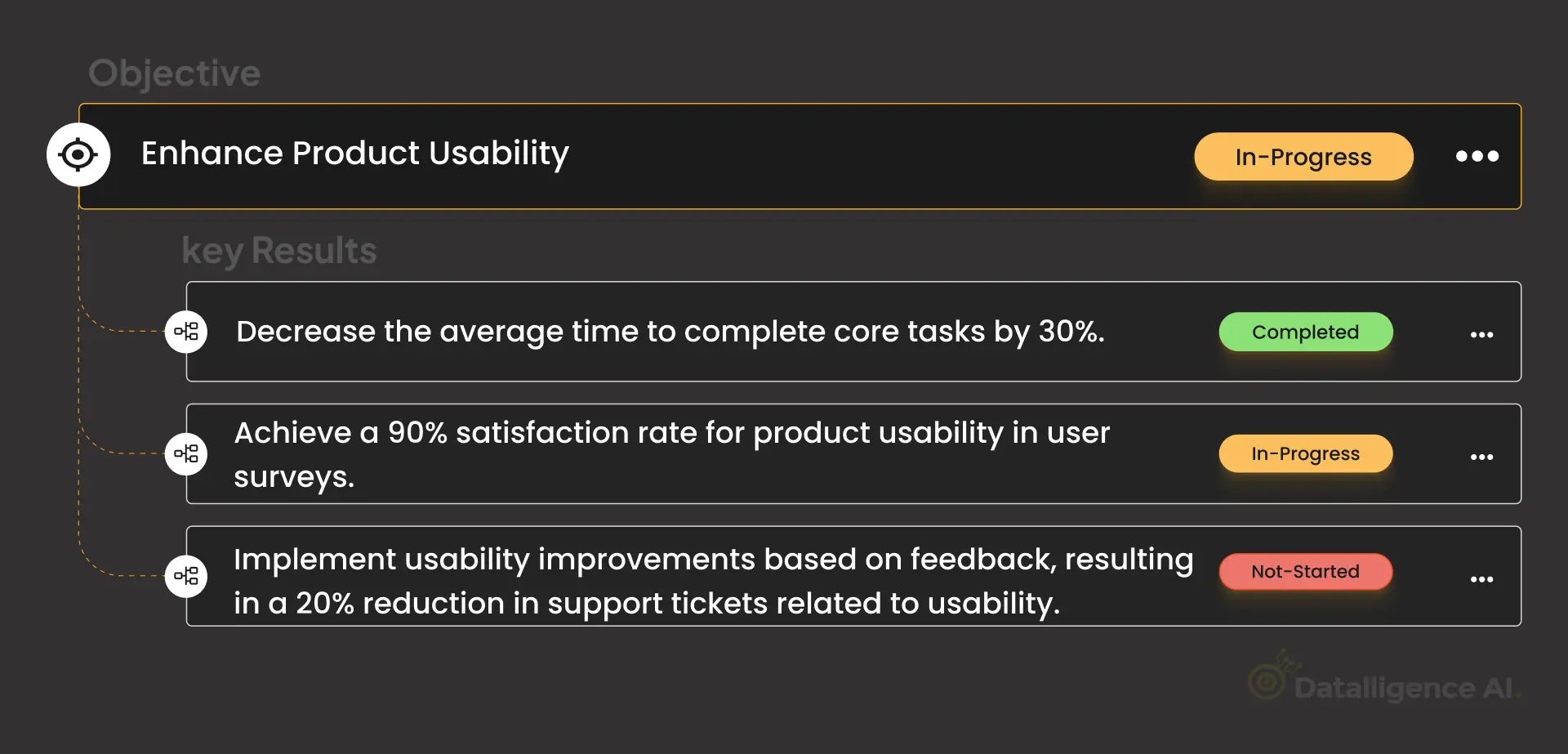
- Objective: Boost Customer Retention
Retaining customers is more cost-effective than acquiring new ones. Improving retention rates is vital for our startup’s sustainability.
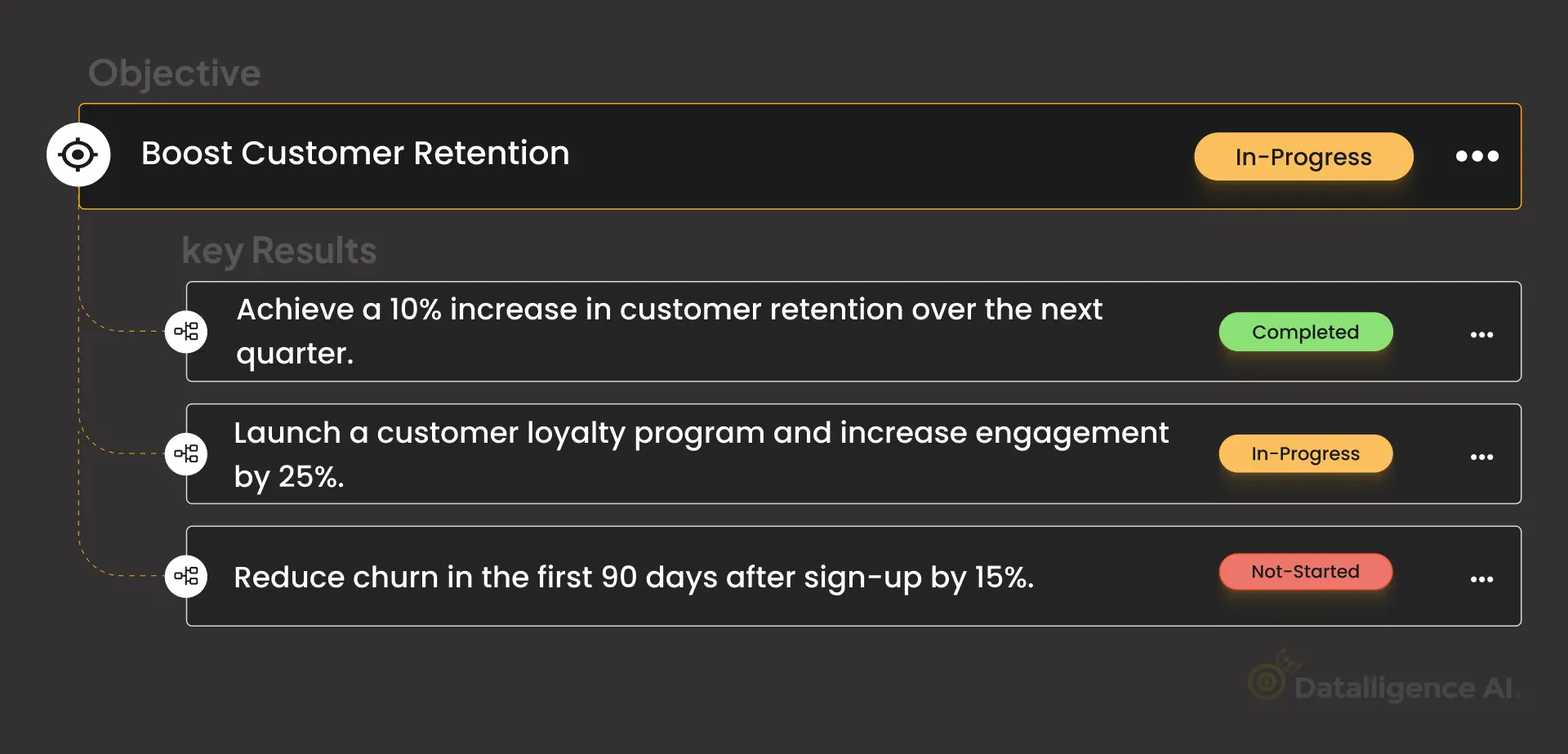
- Objective: Expand Market Reach
Penetrating new markets diversifies our customer base and reduces dependency on a single segment.

- Objective: Improve Conversion Rates
Enhancing our conversion rates means more efficient use of existing traffic and resources.
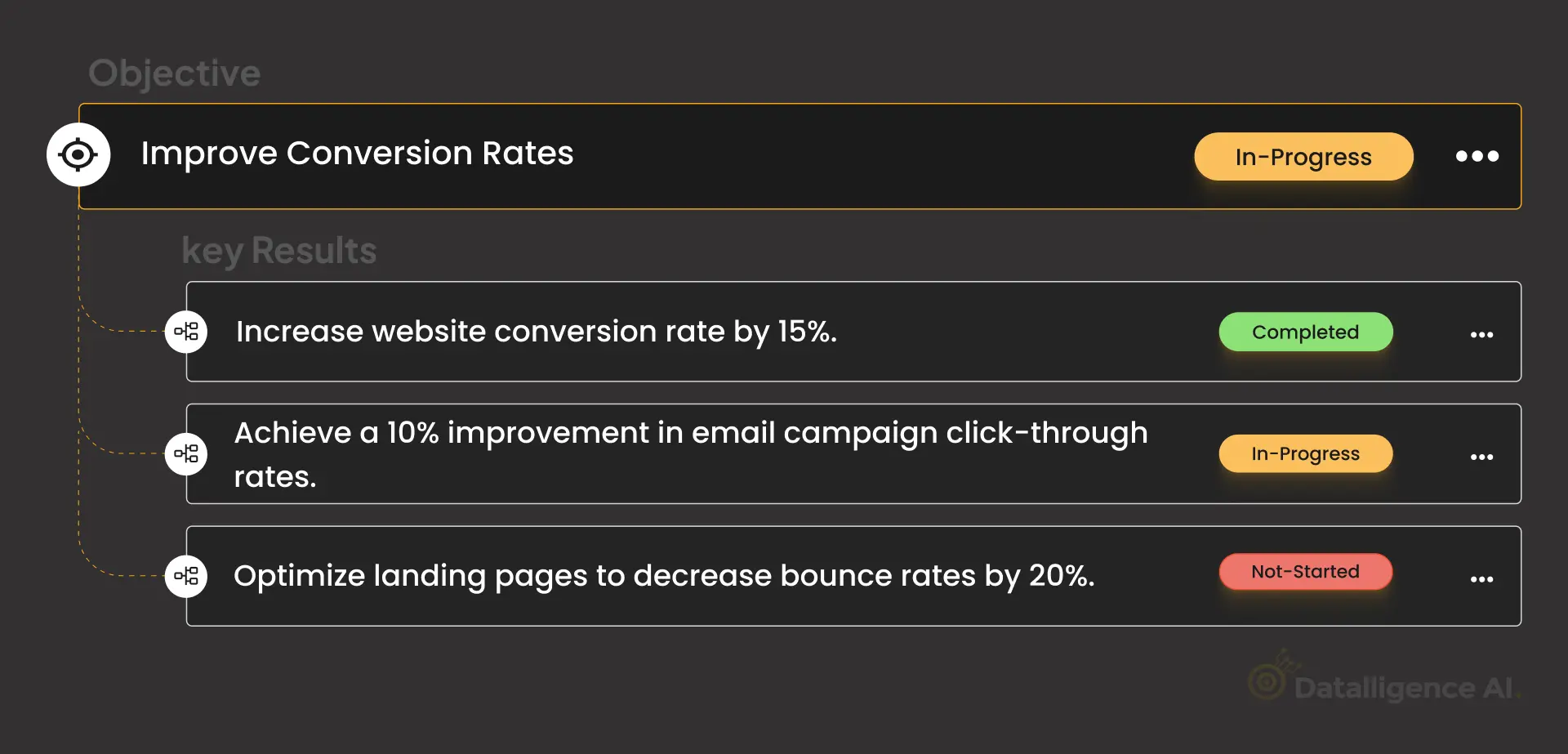
- Objective: Enhance Mobile App Performance
With the rise of mobile usage, ensuring a seamless mobile app experience is paramount.
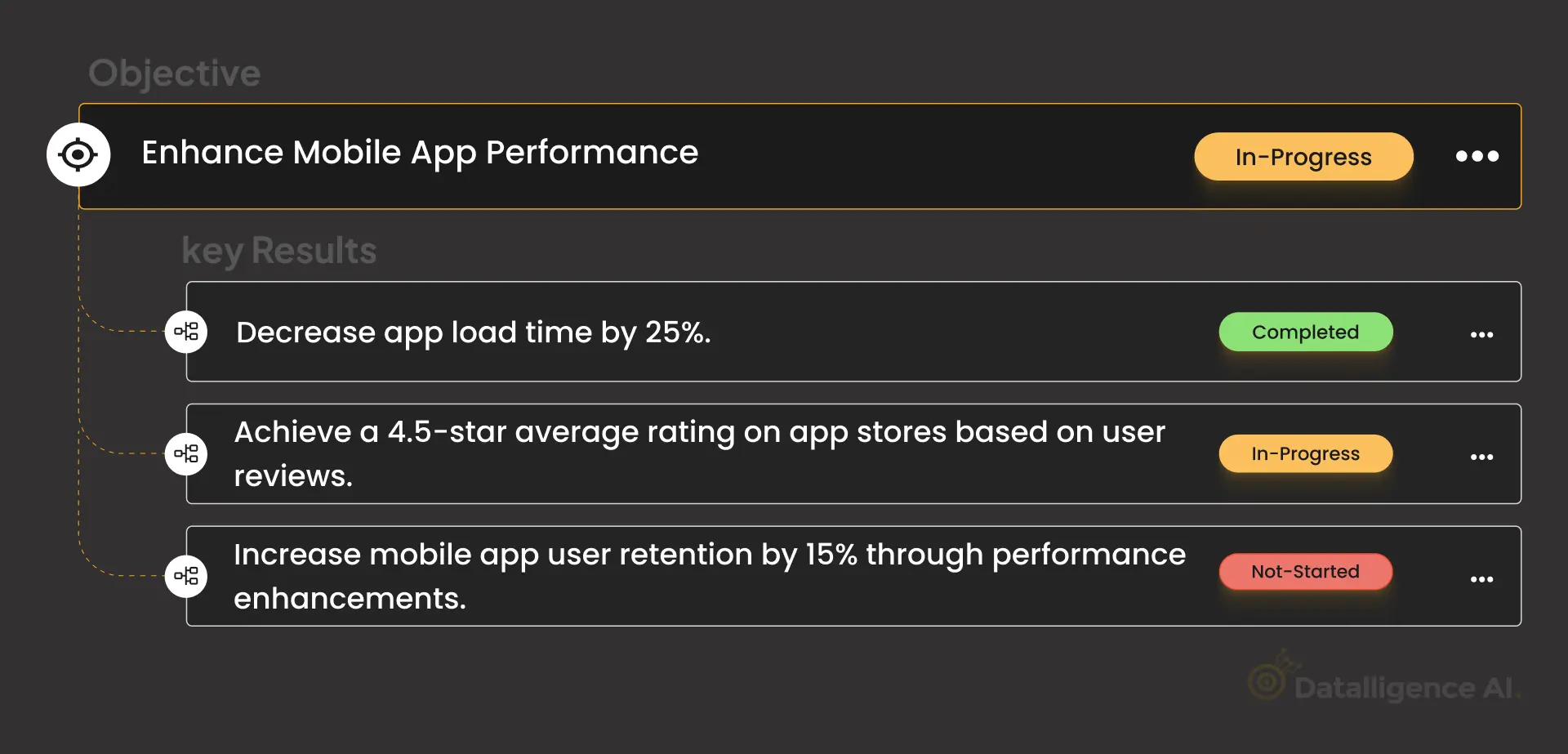
- Objective: Develop New Feature Set
Innovating and offering new features keeps our product relevant and engaging for users.

- Objective: Strengthen Data Security
Ensuring data security builds trust among users, especially in today’s digital landscape.

- Objective: Improve User Feedback Loop
A robust feedback loop helps us understand user needs better and make informed product decisions.
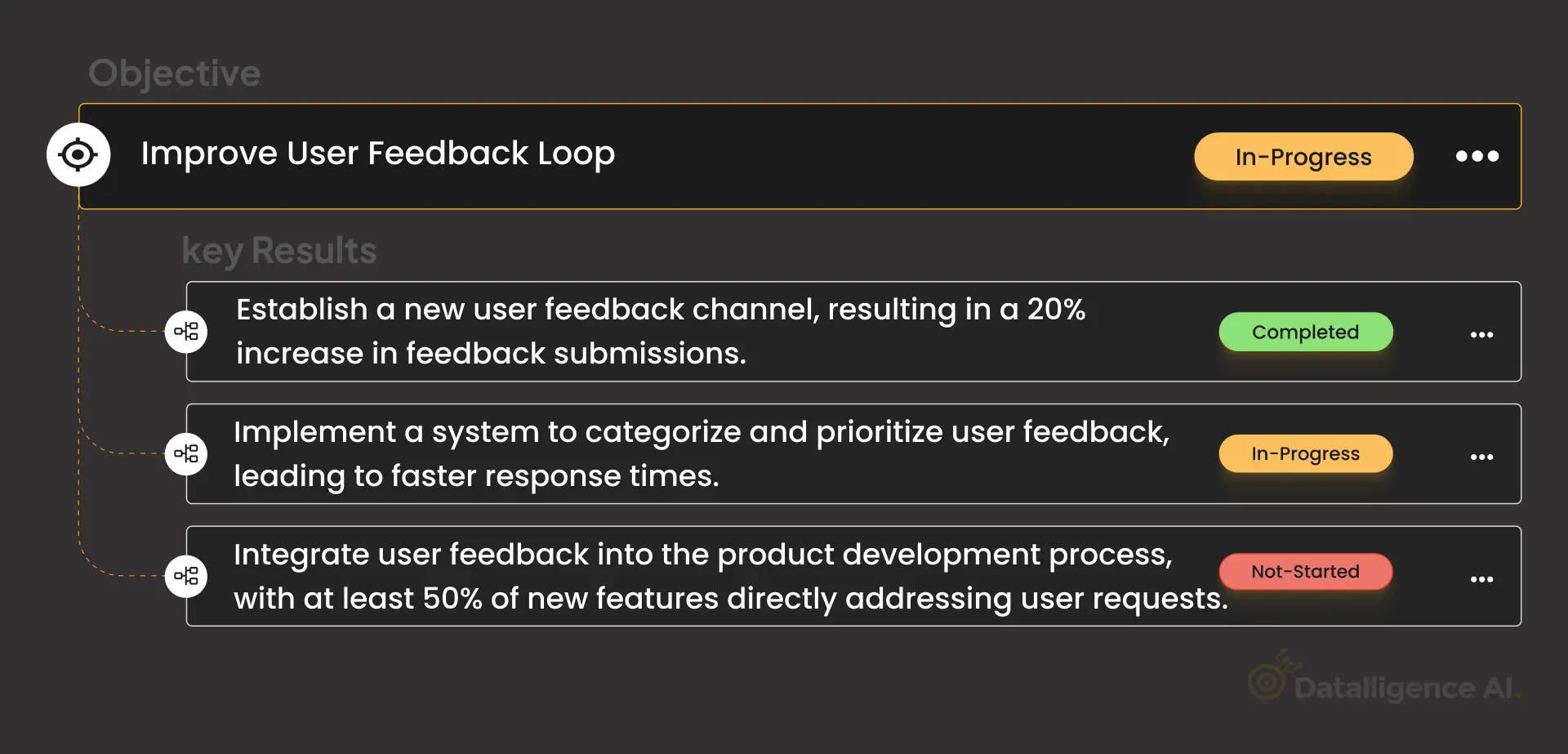
- Objective: Enhance User Education
Educating users about our product’s value and capabilities boost engagement and adoption.
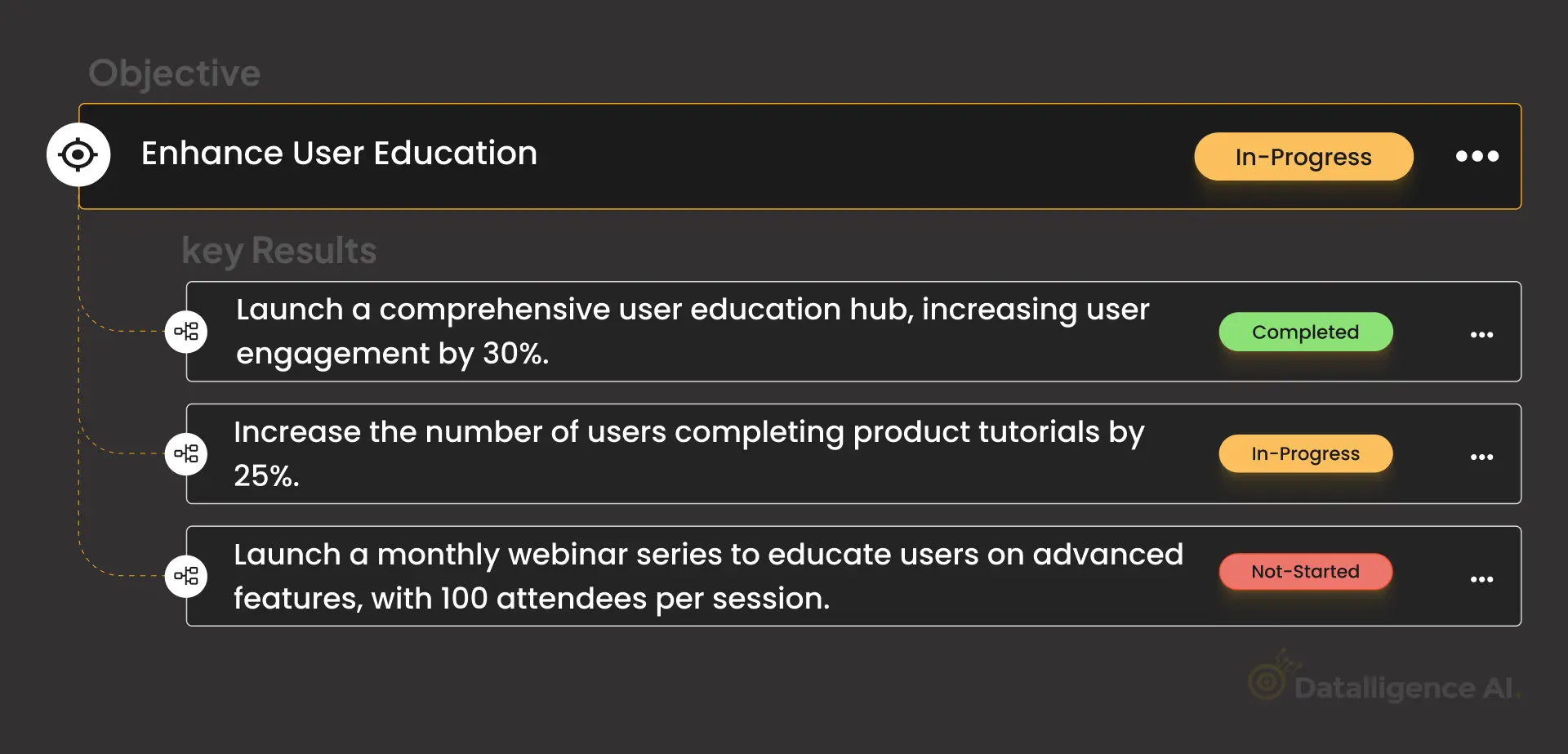
- Objective: Optimize Pricing Strategy
Pricing plays a crucial role in attracting customers and maximizing revenue.
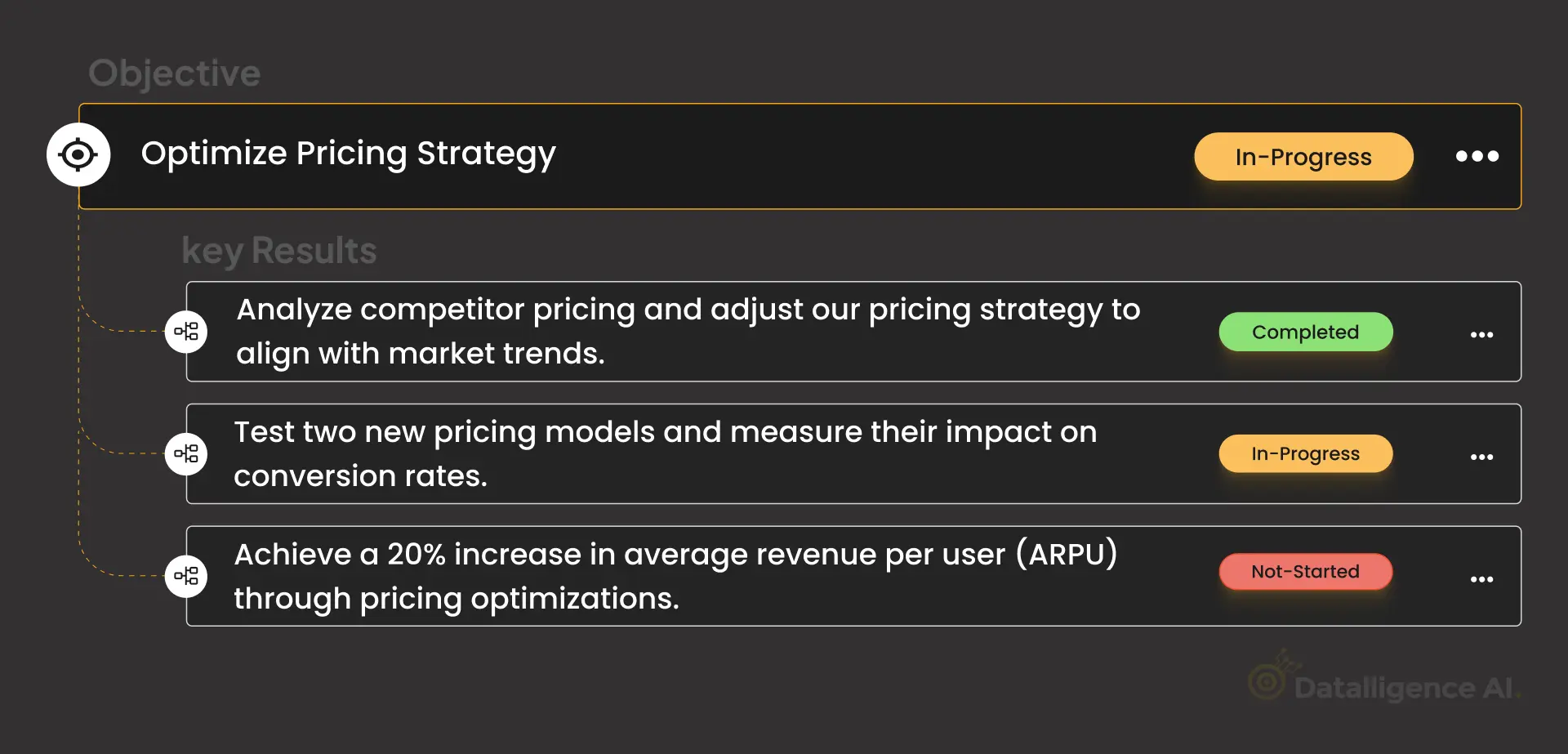
- Objective: Streamline User Onboarding
Simplifying the onboarding process leads to faster user activation and increased user satisfaction.
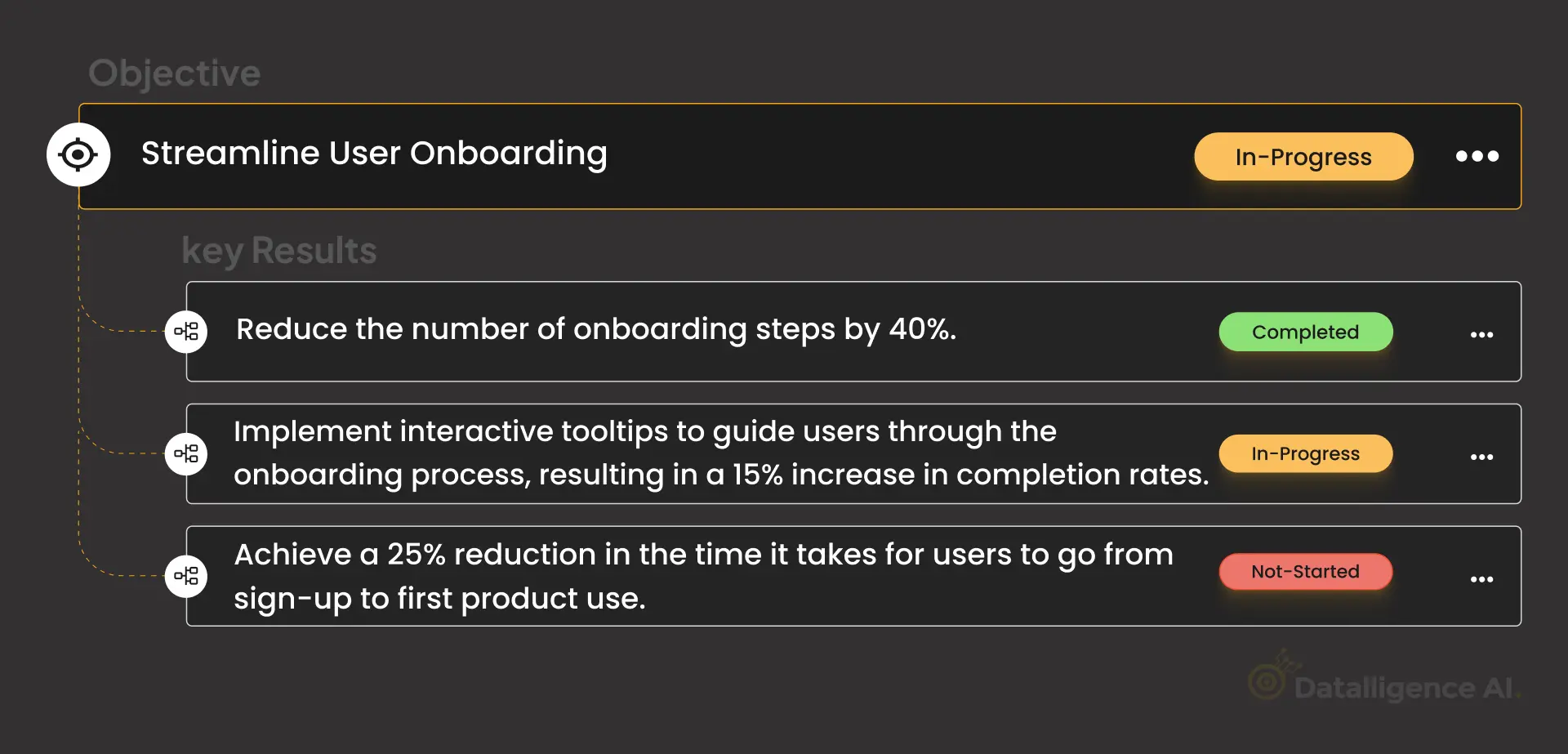
- Objective: Develop Content Marketing Strategy
A well-executed content strategy positions us as industry experts and attracts organic traffic.

- Objective: Enhance Customer Testimonials
Positive customer testimonials serve as powerful social proof, influencing potential customers’ decisions.

- Objective: Implement Data-Driven Decision-Making
Utilizing data to guide decisions helps us make strategic choices that drive our startup’s growth.
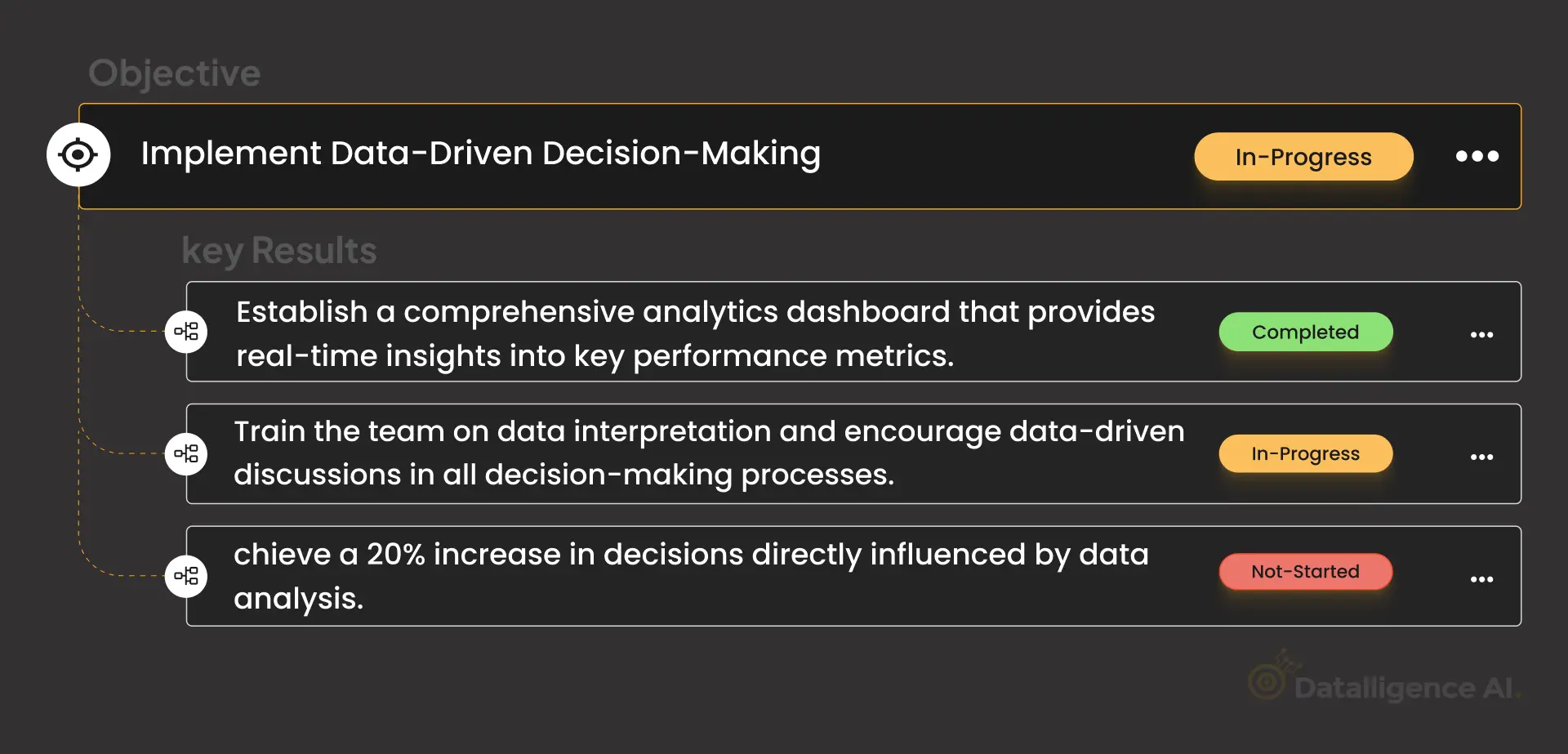
These are just a few Startup OKR Examples; the precise OKRs that are appropriate for your startup will be determined by your individual goals and objectives. These examples, however, can serve as a solid starting point for creating your OKRs.
Tracking your OKRs
Writing effective OKRs is important, but with effective tracking, the OKRs will retain their meaning and the focus will shift.
A team will perform better if it is simpler for them to discuss their OKRs every week. Here are some suggestions for tracking OKRs that work best.
1. Do Weekly Check-Ins:
- Regular check-ins help monitor progress and identify any potential roadblocks.
- Provides a platform for team members to discuss updates, challenges, and adjustments.
- Enhances accountability and keeps the team aligned toward common objectives.
- Allows for real-time adjustments to strategies if progress isn’t aligning with the desired outcomes.

2. OKR Retrospective:
- Conduct regular retrospectives to analyze the effectiveness of the OKR process itself.
- Periodically assess the achieved Key Results against the defined objectives.
- Discuss what worked well and what could be improved in terms of goal-setting, execution, and tracking.
- Consider feedback from team members and stakeholders to refine the OKR methodology.
- Ensure the continuous enhancement of the OKR process for better results.
3. Insights:
- Use visual representations like graphs and charts to display the trajectory of Key Results over time.
- Helps in spotting patterns, fluctuations, and long-term progress trends.
- Enables quick understanding of whether efforts are leading in the desired direction.
- Visualizations aid in communicating progress to stakeholders and team members effectively.
- Data-driven decisions enhance objectivity and reduce biases in the decision-making process.
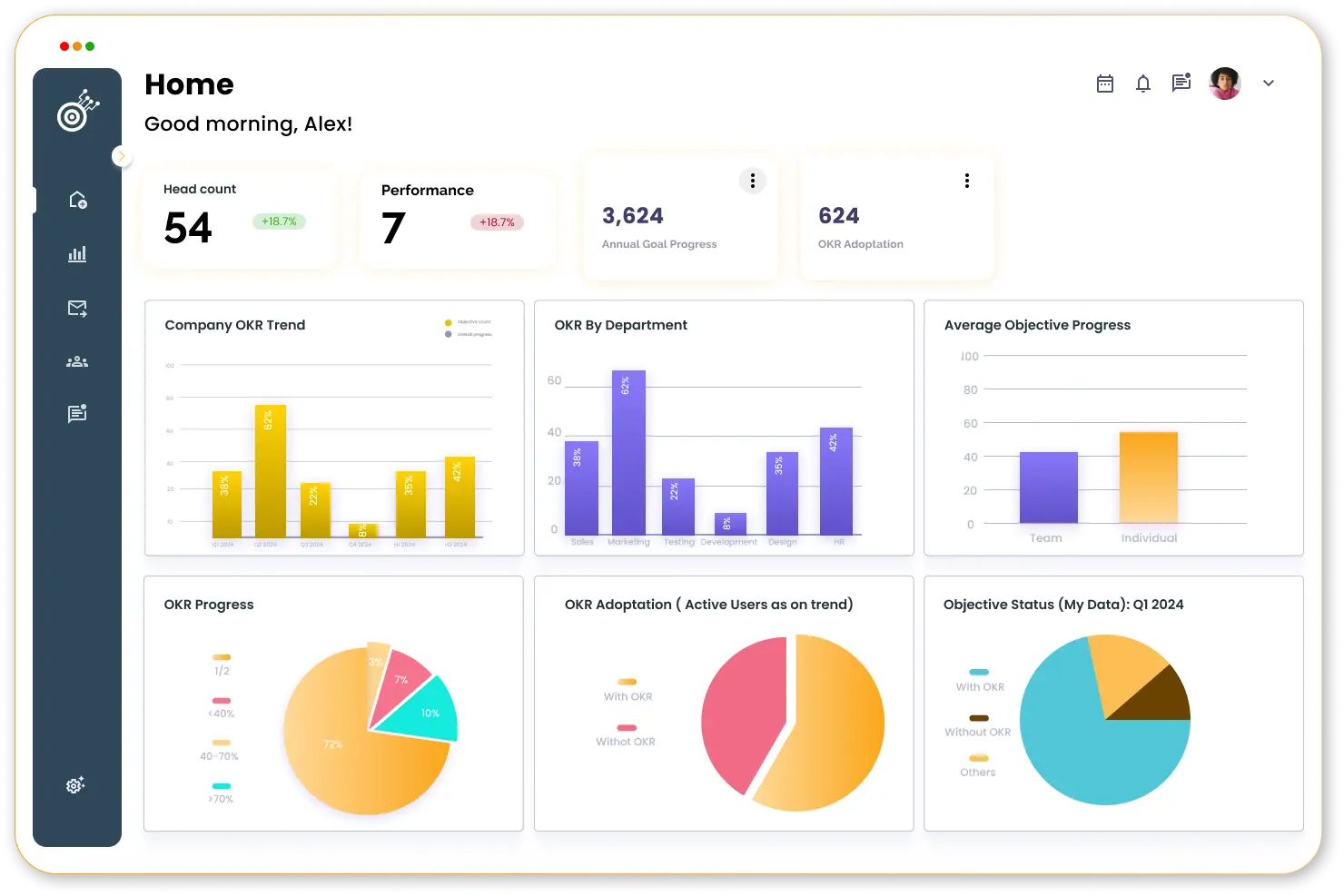
Datalligence Contribution: Datalligence aids in this process by providing a comprehensive platform to set, manage, and track OKRs. It streamlines check-ins, enables confidence tracking, and offers clear visualizations of progress trends, enhancing your ability to achieve your goals effectively.
Different Metrics You Can Use In Your Startup Along With OKRs

Conclusion
OKRs offer startups a powerful tool to steer their growth journey with clarity and precision. By setting meaningful objectives and measurable key results, startups can align their teams, track progress, and drive focused efforts toward their goals. The dynamic nature of the startup landscape demands adaptability, and OKRs provide the flexibility needed to pivot and innovate while staying on course.
One platform that proves to be a valuable ally in the pursuit of OKR success is Datalligence. With its user-friendly interface and comprehensive features, Datalligence empowers companies to set, track, and manage OKRs effortlessly. As startups strive to navigate the challenges and seize the opportunities that lie ahead, Datalligence stands as a reliable partner in their OKR journey. Jump on and talk to our coaches and experts to gain more insights or try Datalligence for free.
Frequently Asked Questions.(FAQs)
- Are OKRs good for startups?
Yes, OKRs (Objectives and Key Results) are highly beneficial for startups. They provide a clear framework for setting and tracking goals, which is crucial for startups navigating rapid growth and evolving market conditions. OKRs help startups stay focused on their most important objectives, align their team’s efforts, and measure progress effectively. By setting ambitious yet achievable goals, startups can drive innovation, track performance, and adapt to changes more efficiently.
- How do I set OKRs for a startup?
- Identify Key Areas: Focus on critical growth areas aligned with your strategy.
- Define Clear Objectives: Set specific, measurable, and ambitious goals.
- Establish Key Results: Create quantifiable metrics to track progress.
- Create Action Plans: Detail strategies, responsibilities, and timelines.
- Align with Strategy: Ensure OKRs match your startup’s mission and values.
- Monitor and Adjust: Regularly review progress and make necessary adjustments.
- How many OKRs should a startup have?
Startups should aim for a manageable number of OKRs to maintain focus and drive meaningful progress. Typically, having 3 to 5 objectives per quarter is ideal. Each objective should have 2 to 4 Key Results associated with it. This structure helps ensure that the team remains focused on high-priority goals without becoming overwhelmed by too many objectives. The key is to keep OKRs ambitious but realistic and to regularly assess and adjust them as needed.



